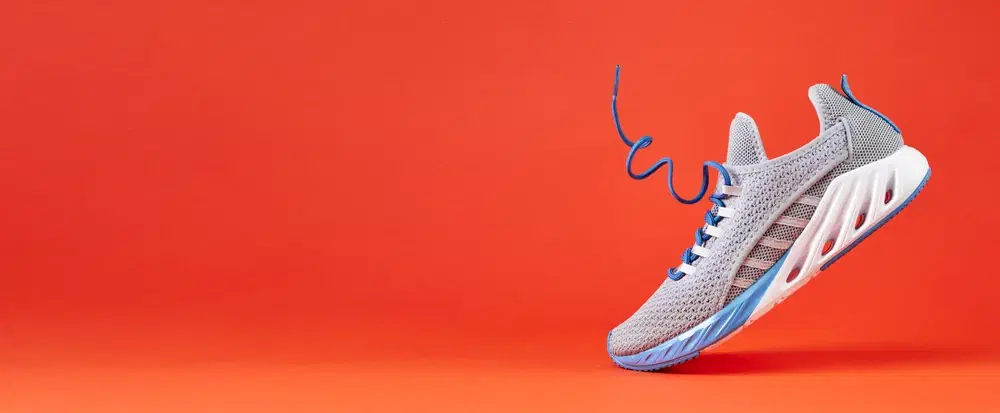
Footwear Guide
•04 min read

Running shoes are more than just a fitness accessory—they’re a critical tool that can impact your performance, comfort, and overall foot health. One of the most overlooked yet important components is the sole material. This checklist will guide you through the factors you need to consider for choosing the best sole material for running shoes. By reading on, you will learn about different types of running shoe soles, the impact of cushioning, traction, and durability, and how to make an informed choice for your running needs.
The sole material of a running shoe plays a key role in providing support, grip, and shock absorption. If you run on roads, trails, or track, the right sole material boosts performance and protects against injuries. Using the best running shoe materials tailored to your style not only enhances your comfort but also contributes to long-term foot health. Understanding your options helps you avoid discomfort and premature wear.
Running shoe sole comparison becomes easier when you know the commonly used materials. Each material offers different features. Consider these types when choosing running shoe soles:
Rubber: Known for its durability and excellent traction, rubber soles work well on wet or slippery surfaces.
EVA (Ethylene Vinyl Acetate): As one of the lightweight running shoe soles, EVA foam offers superior cushioning but may require more frequent replacement.
PU (Polyurethane): Valued for its shock absorption and durability, PU soles are great for runners needing extra support during high-impact sessions.
TPR (Thermoplastic Rubber): This material blends the benefits of rubber and plastic to offer a balanced grip and flexibility.
Foam Composites: Modern foam solutions such as advanced composites provide cushioning in running shoe soles without adding excess weight.
Durability is crucial, especially for runners who log high mileage. Running shoe sole comparison highlights that rubber soles tend to be the most robust and are a smart choice for those tackling varied terrain. In contrast, while EVA offers a lightweight feel, it may wear out faster under heavy impact. Weighing durability against cushioning and weight is essential for making a balanced choice.
Cushioning in running shoe soles is essential for absorbing shocks and protecting delicate joints. EVA foam is highly regarded for its ability to deliver a soft, responsive feel. For runners who need more robust shock absorption, PU offers extra cushioning. The trade-off often comes between maintaining a lightweight structure and adding necessary support, which makes understanding the materials a priority.
Traction in running shoe soles provides the grip needed to maintain stability, particularly on wet or uneven surfaces. Rubber soles excel when it comes to delivering this grip. Whether you are running on urban roads or tackling a muddy trail, a sole with deep lugs and optimum traction can reduce the risk of slipping.

Weight is a critical factor for those looking to enhance speed and agility. Lightweight running shoe soles, like those made from EVA foam, facilitate faster movement and efficient energy transfer. However, remember that the lightest materials might not be the most durable. Evaluating your running conditions alongside your need for speed will help you choose a material that suits your goals.
For road running, the smooth surfaces demand a balance between cushioning and durability. Lightweight EVA soles provide excellent cushioning and flexibility, making them an attractive choice for this type of run. If extra durability is required, pairing rubber elements can enhance the overall performance of the shoe. This balance offers both comfort and longevity for daily runs.
Trail running requires robust soles with deep lugs designed to give you outstanding grip in rocky, muddy, or uneven terrain. Rubber soles are preferred when it comes to navigating challenging landscapes. The increased traction and stability help ensure a safer run through tough outdoor conditions. Combining rugged materials in sole construction helps you meet the diverse demands of trail running.
Running in wet conditions calls for soles that excel in dispersing water. Rubber soles with specialized tread patterns are the best running shoe materials when dealing with rain or slick paths. Their design helps reduce the risk of slipping while maintaining traction on wet pavement. This choice not only boosts performance but also keeps you confident on rainy days.
Long-distance running places a premium on cushioning and weight. Lightweight foam soles, such as EVA or modern foam composites, provide the cushioning necessary for prolonged impact while reducing extra weight. This design ensures that your feet receive continuous support over long runs, limiting fatigue and stress on your joints. Each material offers distinct benefits, making it important for runners to match their choice with their running style.
Use the checklist below to narrow down your search for the best sole material for running shoes:
Assess your running style: Are you a casual jogger, a sprint enthusiast, or a dedicated trail runner?
Consider the terrain: Are you predominantly on roads, trails, or tracks?
Evaluate durability needs: How many miles do you cover weekly and how often do you run?
Prioritize cushioning: Do you need extra shock absorption for joint protection?
Think about traction: Will you be running in wet or slippery conditions?
Factor in weight: Do you value a lightweight design for speed or a sturdier build for stability?
Account for weather conditions: Are you running in extreme heat, rain, or snow?

Expert Tip: Maximize Sole Performance
"Did you know that combining materials like rubber and EVA in a hybrid sole can provide both durability and cushioning? Many premium running shoes use this approach to offer the best of both worlds for versatile runners."
Rubber soles are the best choice for wet conditions due to their superior grip and water-resistant properties.
Foam soles like EVA or advanced foam composites are lightweight and provide excellent cushioning, but they may wear out faster than durable rubber soles.
For road running, lightweight EVA soles work well, while trail running demands robust rubber soles with deep lugs to offer extra traction.
Yes, there are eco-friendly options available such as recycled rubber or bio-based foam materials that meet performance needs responsibly.
Lightweight running shoe soles, like those made from EVA foam, may not be as durable as heavier options but offer unmatched cushioning and speed. Striking the right balance is key.
Choosing the best sole material for your running shoes is essential for optimizing performance, comfort, and safety. Whether you opt for durable rubber soles on rugged trails or lightweight EVA foam for road races, each material offers unique benefits tailored to different running styles and terrains. Use this checklist to confidently select a sole material that aligns with your specific needs and enjoy a more supportive, stylish running experience. Explore more insights on footwear and style trends as you embrace your running journey with smart choices.